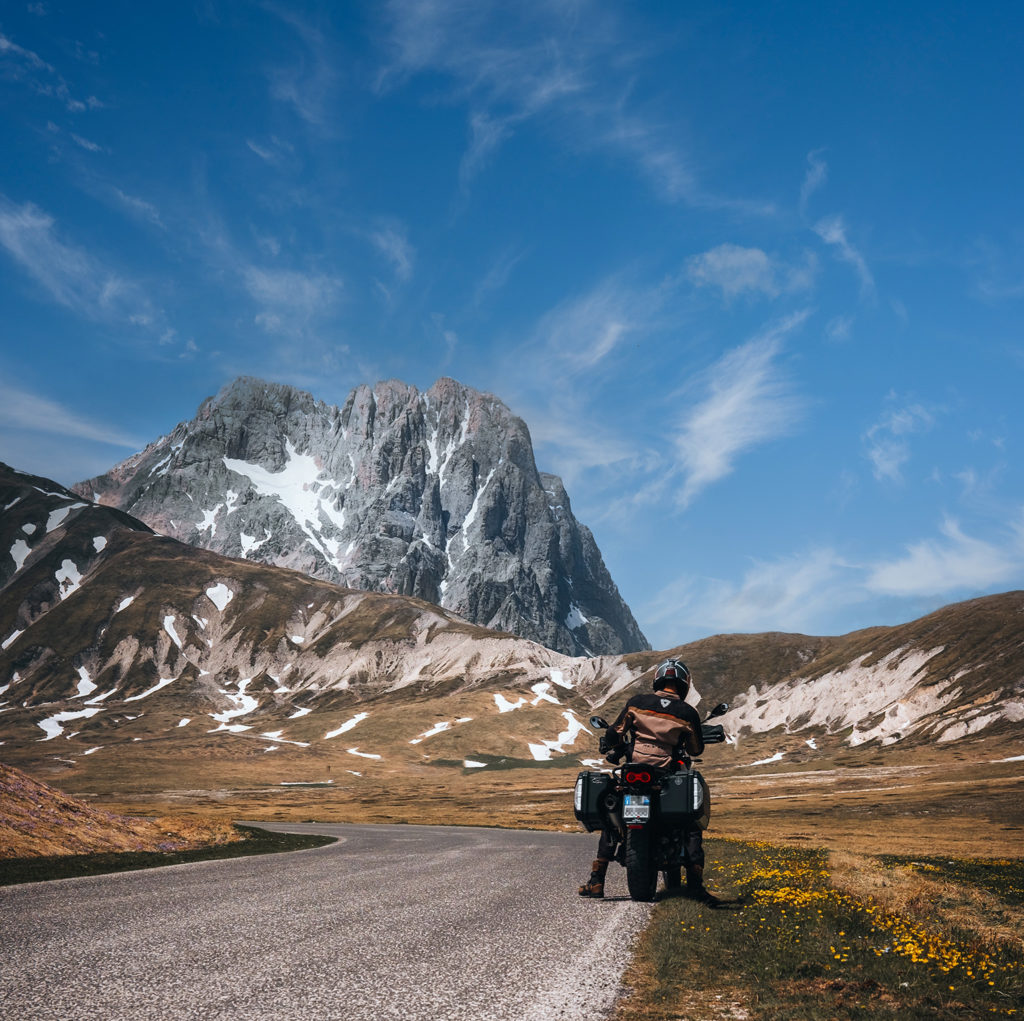SURVIVAL IN THE SADDLE • PART 12
Today we’re going to talk about some specific cold weather riding hazards that you are likely to encounter. These hazards have to do with road conditions and the effects they have on you and your machine.
If you’re just joining us today we would like to call your attention to two previous posts on the subject of motorcycle riding in cold weather. They can be found at the following links:
Check them out.
Before You Leave Your Driveway
Keep in mind that colder temperatures have a dramatic impact on tire pressure. When the mercury falls your tire pressure falls with it. Depending upon how cold it is, this drop in tire pressure can be substantial. At the very least low tire pressures can lead to excessive tire wear in a very short period of time. In the worst case scenario low tire pressures can cause adverse handling characteristics leading to an accident. Low tire pressure is one of the major cold weather riding hazards to look out for.
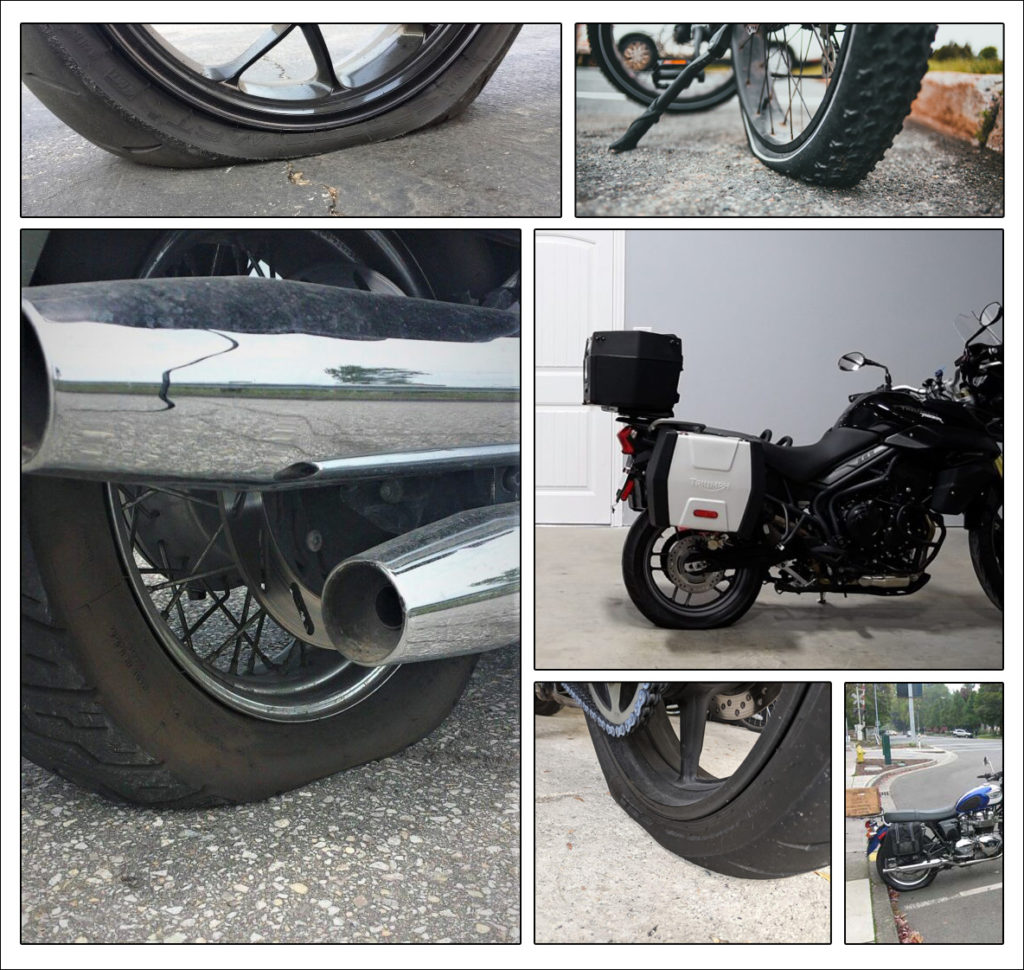
The amount of air pressure you might lose in cold weather varies. Factors that contribute to the drop in pressure include how cold it is, how long the bike has been sitting idle, whether your tires are tubeless or tubed, whether your wheels are laced or cast, as well as other considerations.
Tire pressures should be checked when they are cold. Before you start riding. Pressure will increase slightly as the tires heat up through riding. The amount that the pressure will increase depends on the particular bike, the tire itself and how the machine is being operated. The motorcycle’s recommended tire pressures are always quoted “cold” to eliminate these variables.
Break Out Your Compressor
In a previous post we discussed some of the emergency gear that all seasoned motorcyclists should carry with them at all times. For emergency repair of flat tires I carry a Ryobi portable air compressor on board. How convenient. It’s right there on my bike if I just need to pump up the tires a bit. As an added bonus I haven’t moved the bike yet. I’m getting an accurate cold temperature tire pressure reading.
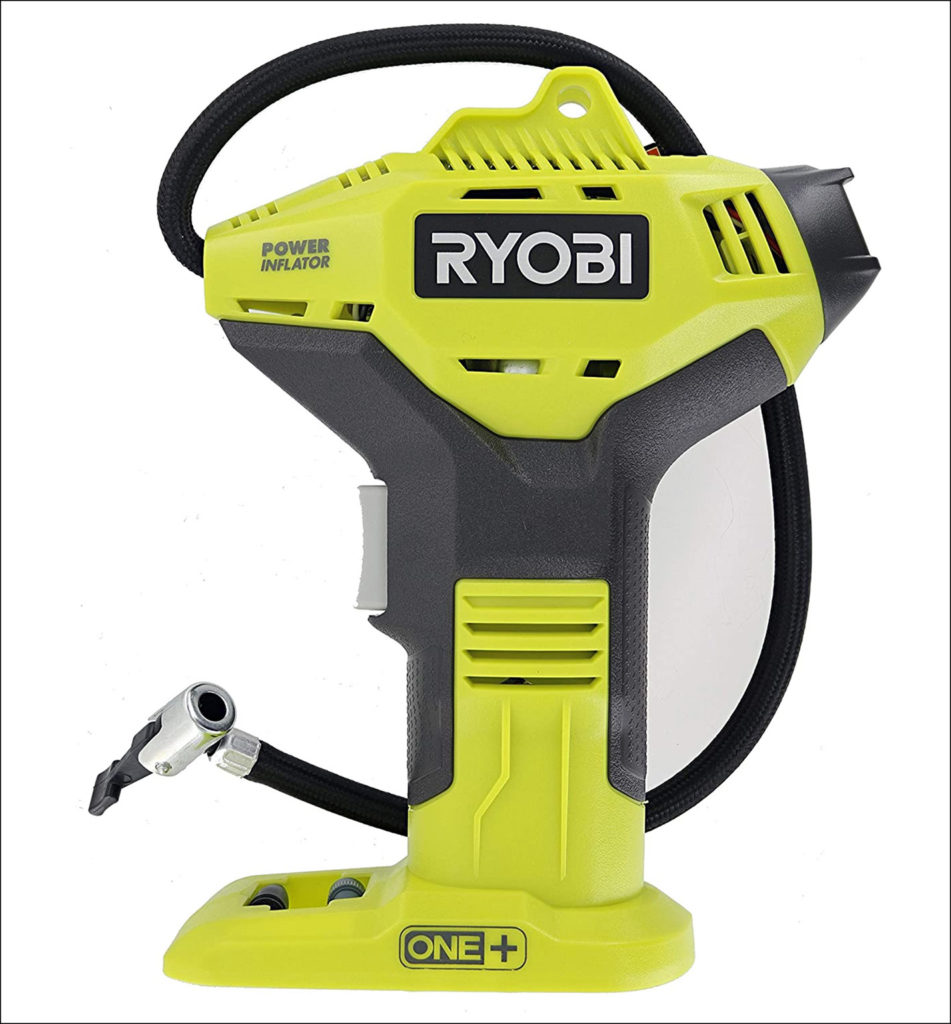
If you travel a few miles to the local service station before checking your tire pressure, you’re not going to get an accurate reading. Be sure to check your tire pressures cold, even if you have to ride elsewhere to air up.
Leaf Peeping For Safety
From mid to late autumn Mother Nature is putting on her annual display of beautiful fall foliage. This is one of my favorite times of the year to ride. I prefer riding in cooler weather over the warmer temperatures. As far as scenic beauty is concerned autumn has no equal.
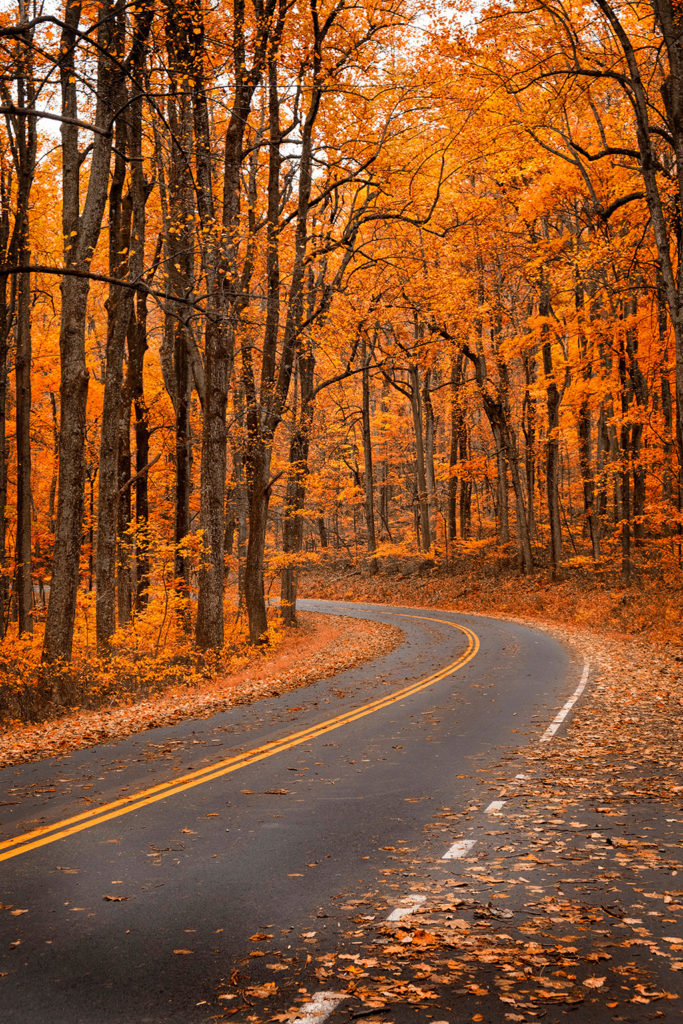
The photograph above was captured as I motored along Skyline Drive in Virginia in early November a year or two back. The sheer beauty of the fall colors on this legendary motorcycle road was overwhelming. What the observant motorcyclist should also be especially aware of is those leaves that have already fallen to the ground. This is another of the major cold weather riding hazards you’re likely to encounter.
When those leaves are wet they become as slippery as mud or ice. Treat them with the same respect. Traction on wet leaves is minimal. Worse than riding in the rain. Slow down and increase the distance between any traffic ahead. Be sure to make your braking and throttle application as smooth as possible. Avoid speeds that require excessive leaning into curves. Take it slow and enjoy the beauty. Arrive at your destination safely.
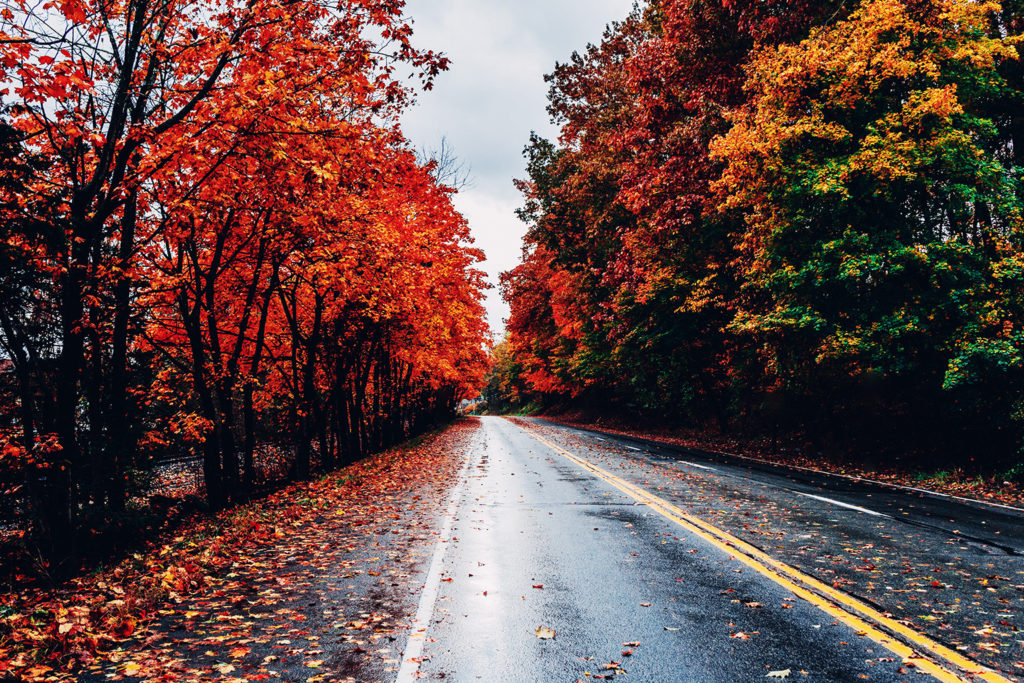
Fog
Fog is very common in the fall. The nights are getting longer. The ambient temperatures begin to cool. Land and water surfaces that warmed up during the summer still evaporate a great deal of moisture into the atmosphere. All prime factors in the formation of fog.
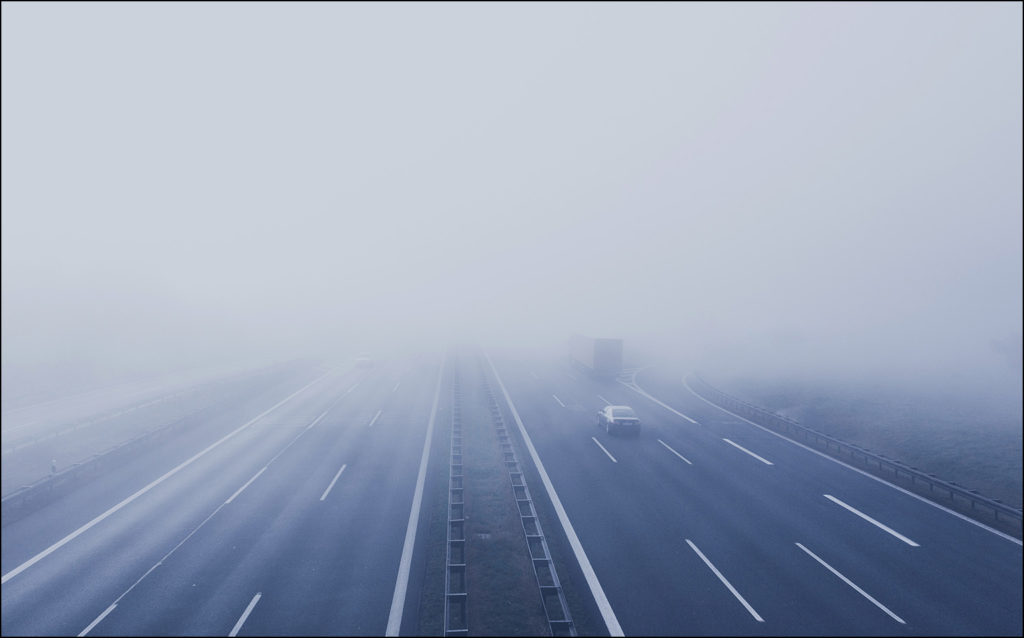
You can encounter fog any time of the day, depending upon the atmospheric conditions where you’re traveling. There is a higher probability of finding foggy conditions early in the day, as the ground masses start to warm up after a cool night.
Common sense rules when riding in the fog. In a previous post you were advised to be looking 8-10 seconds ahead of you at all times. On the highways that number should be extended to 12-15 seconds. In dense fog this safety rule might require very slow speeds on back roads and secondary roads. It may preclude safe travel on major highways completely.
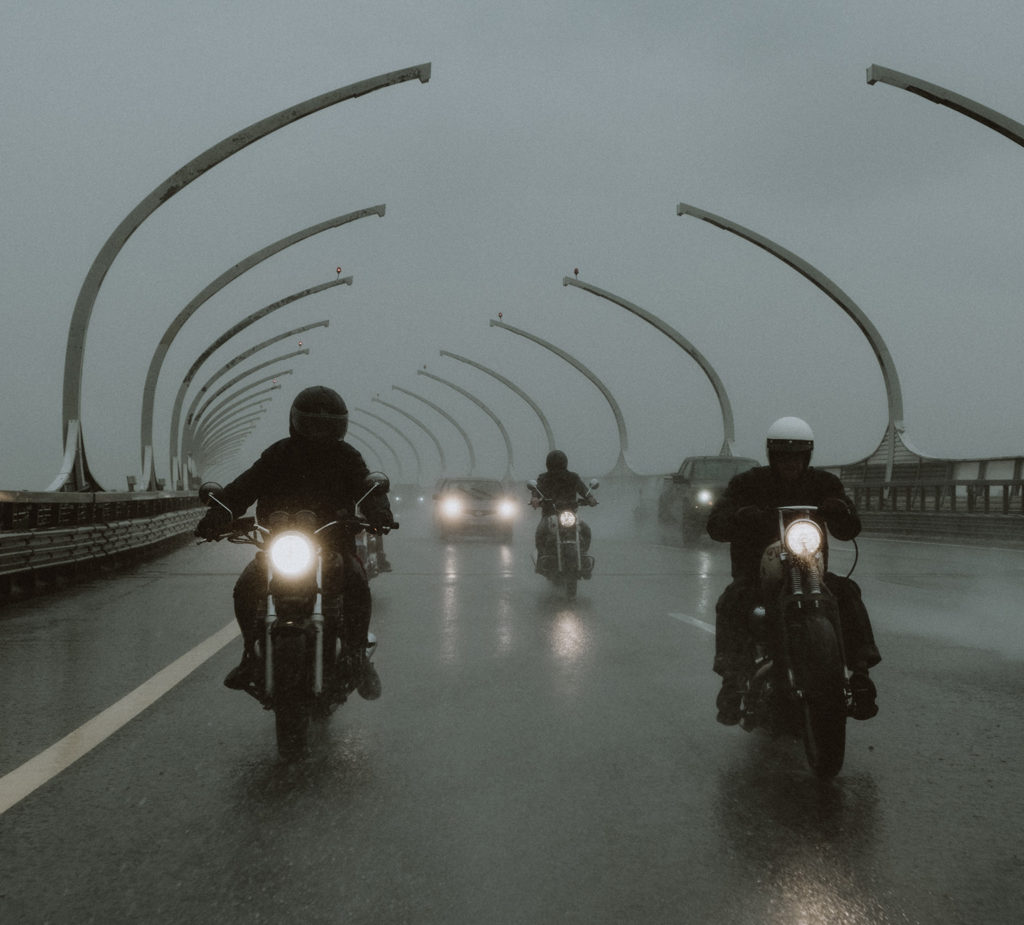
Visibility is everything! You need to see and be seen. If you choose to ride in dense fog do everything within your power to be seen by other drivers. A previous post, Stand Out From The Crowd, offers a bounty of information on this most important subject. Do yourself a favor and read it. It just might save your life.
Icing
One of the most dangerous cold weather riding hazards you can encounter is icing on the pavement. The National Weather Service has actually defined the common moniker Black Ice as follows:
“Patchy ice on roadways or other transportation surfaces that cannot easily be seen. It is often clear (not white) with the black road surface visible underneath. It is most prevalent during the early morning hours, especially after snowmelt on the roadways has a chance to refreeze overnight when the temperature drops below freezing. Black ice can also form when roadways are slick from rain and temperatures drop below freezing overnight.”
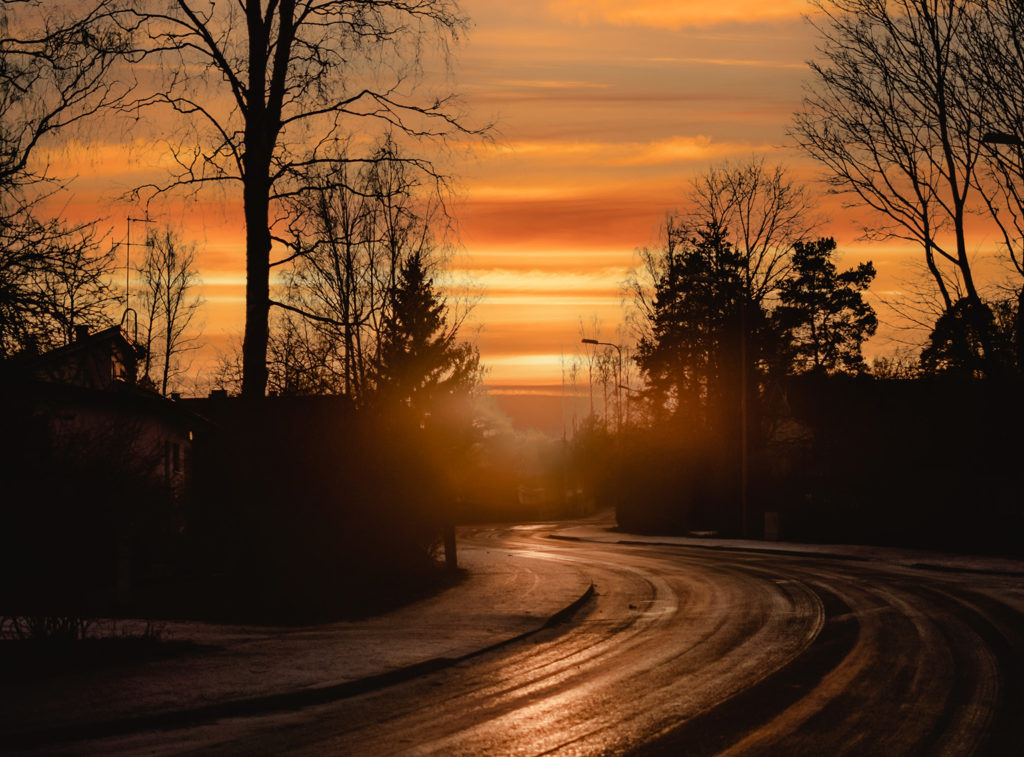
Any icing condition is probably the most dangerous hazard that a motorcyclist can encounter. It all comes down to one word. Traction. When you’re on ice, you have none. No way to really bring your motorcycle to a stop. No way to lean your bike into a turn. No way to even put your feet down firmly on the ground.
If there is ice on the road keep the bike parked. Yes, I know there are folks that ride their ADV and off road bikes in the snow for fun. And, Yes, I’ve know there are avid sidecar jockeys that ride their rigs in snowy conditions. More power to them. But the average street biker…on two wheels…has no business being out when the roads are covered with snow or ice.
Unforeseen Circumstances
Any serious biker (one that doesn’t stop riding when the temperature drops below their age) has at one time or another, found themselves in an environment they didn’t choose to be in. It’s the nature of this two-wheeled pursuit of ours. Things don’t always go according to plan.
There are things one can do to minimize risk. First, and foremost, pay attention to the weather forecasts. If the “experts” are calling for snowfall, sleet or ice conditions keep it parked. In a previous post about Riding In The Rain I listed some of my favorite weather forecasting resources and apps.
Beware Of Bridges
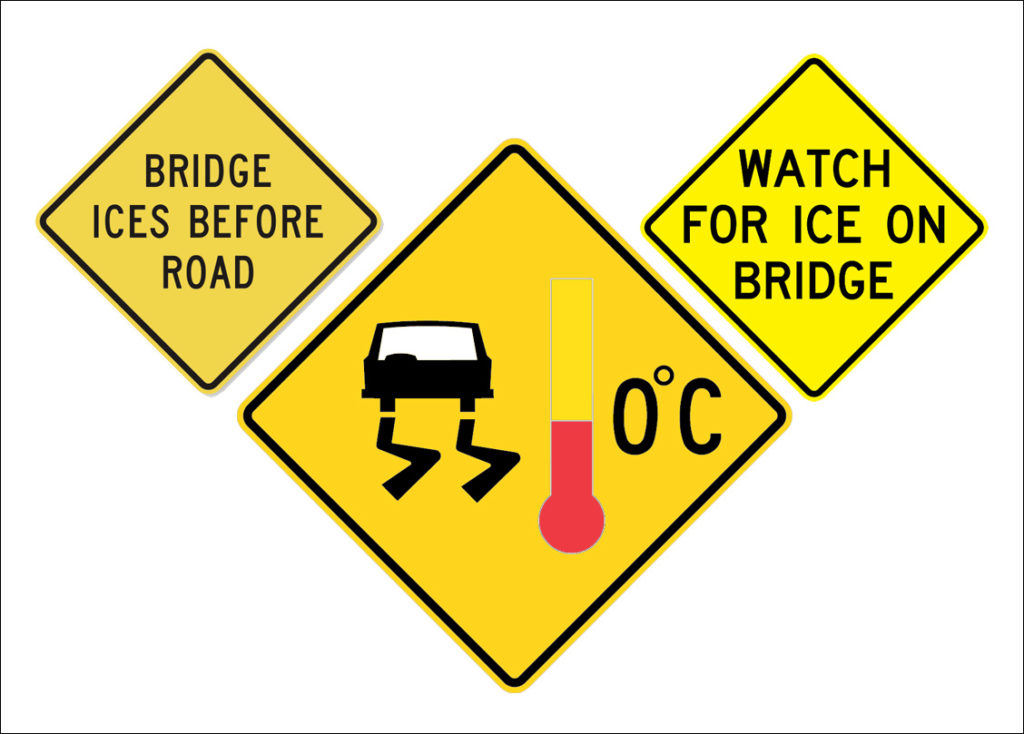
Even when riding in temperatures above the freezing mark certain structures lend themselves to early icing. Bridges present one of the most common cold weather riding hazards. Early icing on bridges is so common that they are often marked with warning signs to the possibility. The reason bridges ice before the surrounding roadway, is that they are subject to cold air circulating freely above, and below the structure.
You could be riding in a cold rain one second and find yourself on a patch of dangerous ice the next. Be extremely careful when riding in temperatures that border on the freezing mark. Try to approach, and cross, bridges in the straightest line possible. Add extra distance between the vehicle ahead of you. The few seconds you lose by slowing down could save you from catastrophe.
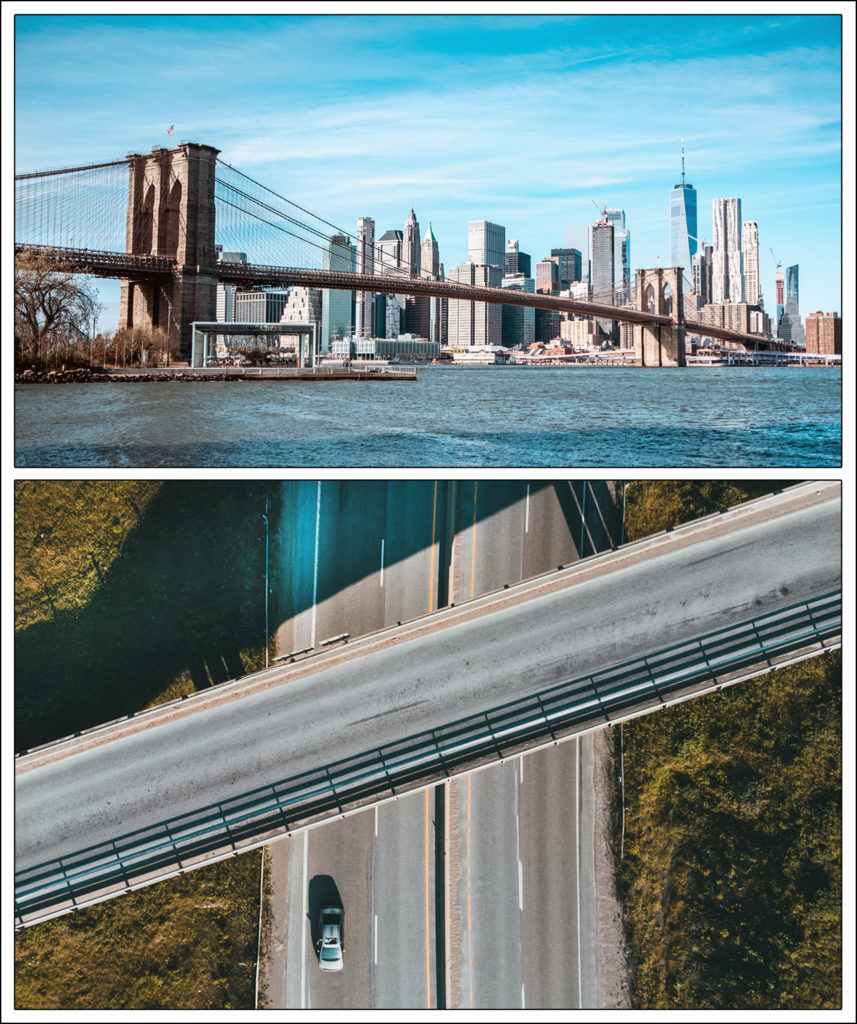
Bridges don’t have to be crossing over a river to be affected by early icing. Even normal highway overpasses are affected by cold wind blowing both above and below them. These structures are not often marked with warning signs, but should be treated with the same respect shown to bridges that span bodies of water.
Sand
All motorcyclists already know about the inherent danger caused by sand on the roadway. In mild cases a rider could experience a sudden loss of traction if they encounter sand while negotiating a turn. In severe situations a bike could plow into a deep deposit of sand on the roadway and lose control completely. Sand has earned its spot as one of the major cold weather riding hazards.
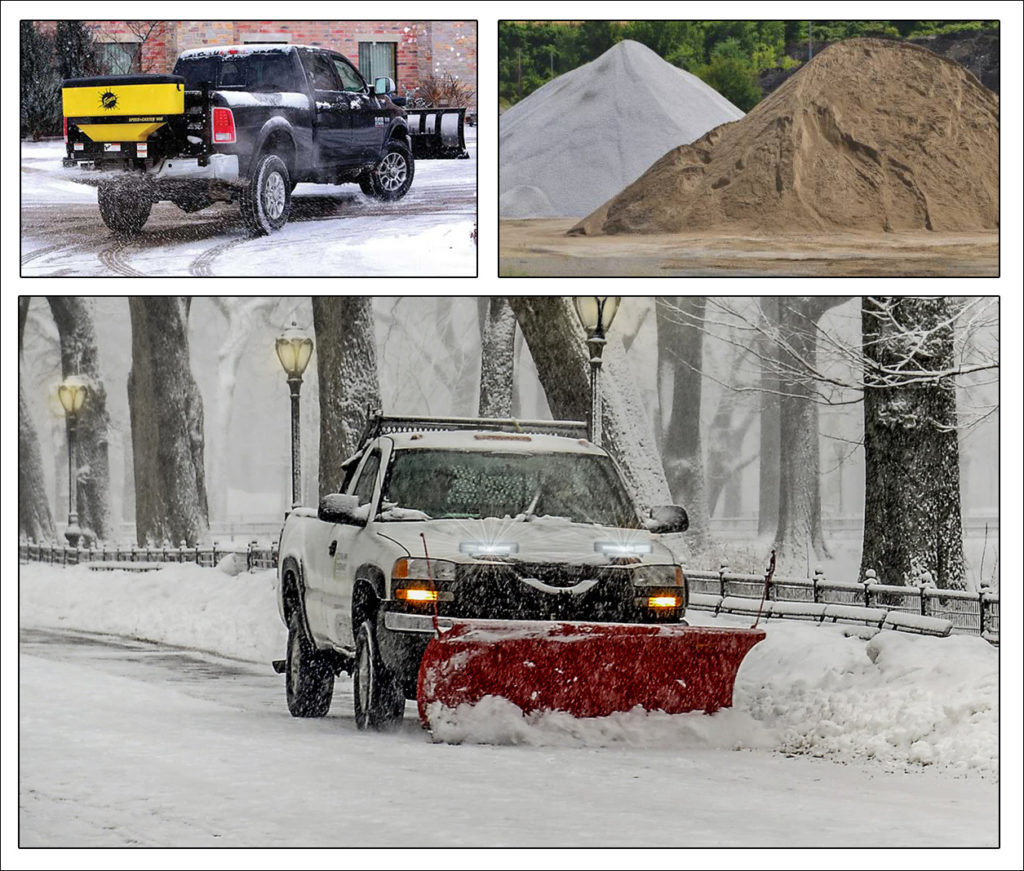
I live in a quaint waterfront village in the northeast United States. The area is quite hilly. The local highway department uses copious amounts of sand and salt during snow storms to help keep traffic moving. I have come to know where I am most likely to encounter sand accumulations on the roads in my home town following a winter storm event.
When away from home I am quite vigilant when riding on days following a recent winter storm. I look for likely spots where I might encounter sand accumulation on the roadway. Such spots include the base of hills, intersections and sharp curves. Any place that the local authorities might have directed their attention and effort in the name of winter traffic safety.
Potholes
This is a topic that really hits home for me. I live on Long Island, NY…the land of ridiculously high taxes and embarrassingly poor public services. It’s almost November as I’m writing this feature and the potholes from last winter (and the winter before that…and the winter before that) are yet unrepaired.
I’ve said this before: “Things that are an inconvenience to automobiles can often be deadly to motorcycles.” Potholes certainly fall within the definition of cold weather riding hazards; especially when they exist in the severity and quantities that they do here.
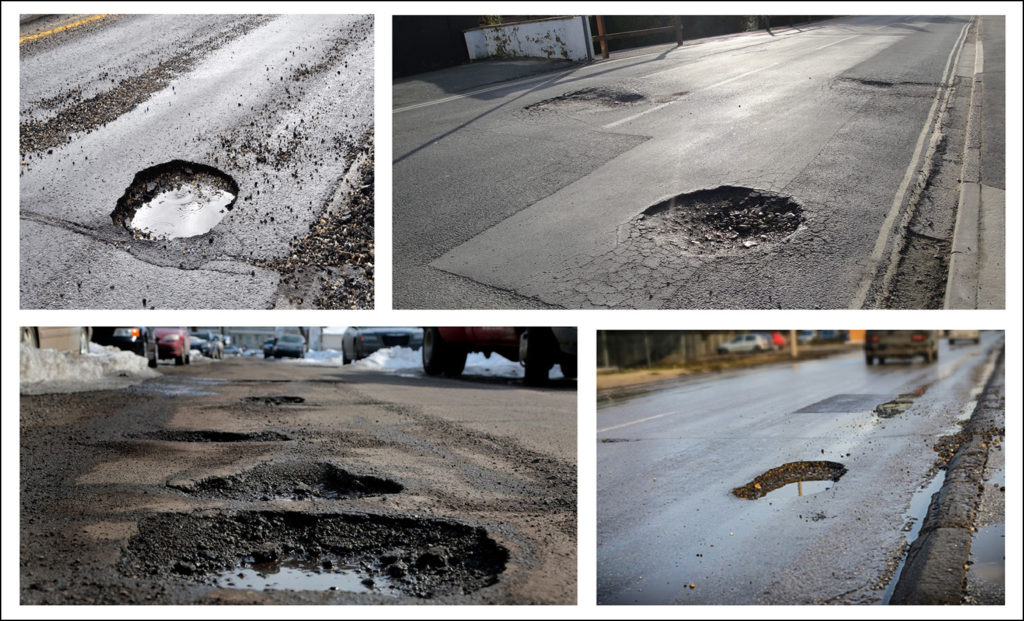
Potholes are caused by the expansion and contraction of water after it has entered in the ground beneath the pavement. As the heavy weight of vehicles pass over the road, pieces of the tarmac weaken. This causes the pavement to break down from the weight; creating potholes.
At the very least striking a pothole will shock you violently. A particularly large one could cause damage to your fork seals and/or bike suspension. A bad encounter with a serious pothole could send you crashing to the pavement resulting in severe injury or loss of life.
Watch out for them. Many will surface when a day or two of warm weather is experienced in the middle of the cold winter months. Most will arrive as winter turns to spring and the warmer air returns for good. On my native Long Island they, sadly, never seem to leave. They’re a year round hazard.
Salt
It never ceases to amaze me when I hear that some folks won’t ride until “all the salt is gone”. They treat their motorcycles like they’re some piece of fine jewelry…not a viable form of transportation. News flash. If you really ride your motorcycle (and do so in less-than-perfect weather conditions) it’s going to get dirty.
Cars get dirty in bad weather, too. Do these same folks stop driving their automobiles when there’s salt on the streets? I doubt it. They probably do the obvious. They clean them. It’s really no big deal to rinse off your bike after a ride on wet winter roads.

I spent 25 years in the saddles of some beautiful Harley-Davidson® motorcycles. All tolled I put well over 300,000 miles on those machines…a lot of those miles in horrendous weather conditions. All of those bikes left my possession looking nearly as good as they did when they left the showroom floor.
Harley_Davidson® makes some of the most durable machines on the highway. Their chrome plating is of the highest quality. The factory three stage paints are unsurpassed. The weather sealing around the electronics in the fairings on their full-faired bikes is impenetrable. To be perfectly honest I worry more about the durability of my European sport touring bike with its use of exotic, lightweight alloys and extensive use of plastics.
Regardless, the maintenance procedure is the same. When you’ve been out riding on wet, winter roads and your bike comes home covered with a dirty coat of salt and road grime; give it a bath. All you really need to do is rinse off the salt with some fresh water. My last house actually had hot water on an exterior faucet. Man, do I ever miss that luxury.
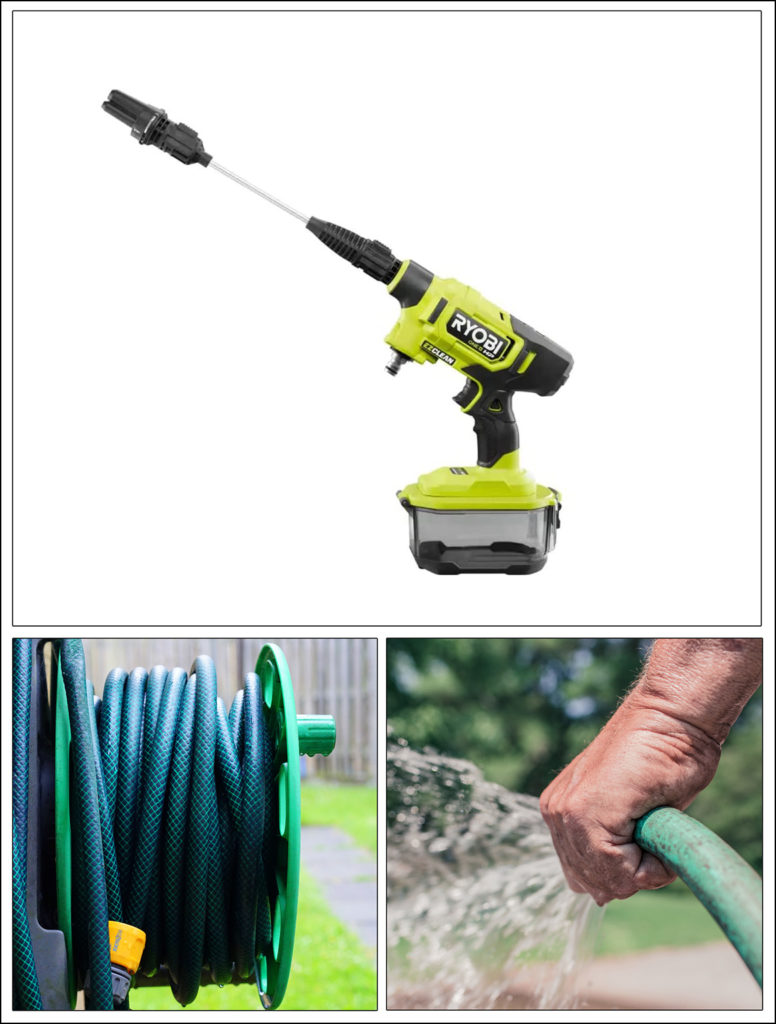
If you’re really a fanatic about keeping a clean machine get your hands on a small portable power washer. I like the Ryobi One+ EZCLEAN power cleaner. It’s powerful enough to reach all the nooks and crannies in your bike and gentle enough to not put water where it shouldn’t go. It hooks up to any conventional garden hose and even has a siphon tube to pump your favorite cleaner out with the fresh water. You can clean your bike thoroughly in minutes.
Life is short. I choose to spend as much time in the saddle as I can. Some of us really do “Live To Ride”. Some are satisfied just looking at their shiny machines sitting in their garages. When that rare 60 degree day shows up in the middle of winter, I enjoy every mile. Sure beats ‘winterizing’ a bike…a concept I never could understand. Sitting at home, in my opinion, is the worst of cold weather riding hazards.

My bike alongside a snow pile while out for a ride on a fine winter day
Some Final Precautions
In a previous post under the heading of Packing Small For Big Trips we recommended carrying, among other items, a self contained battery booster in your onboard emergency kit. This is more important than ever in the cold winter riding months. The frigid temperatures can wreak havoc on a battery that is not in prime condition.

That less than perfect battery might be under the added strain of powering heated motorcycle riding gear, heated hand grips and heated seats. My personal choice is the NOCO Boost Plus GB40 power pack, pictured above. It should go without saying to be sure that it is charged up and ready to go. Like many riders, I am protected by an emergency roadside assistance plan. In really cold conditions, however, you’re better off giving your bike a quick jump start and getting back underway. It beats waiting on the side of the road in hostile conditions for the calvary to arrive.
Cold Weather Riding Hazards • Conclusion
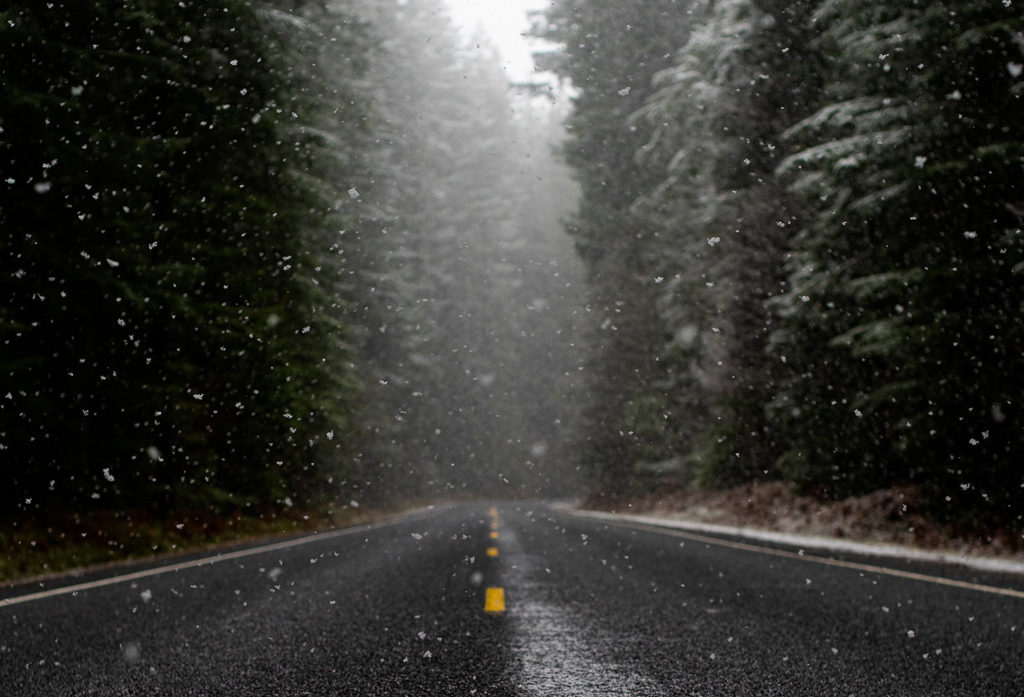
We hope you have enjoyed this series on riding in colder weather. We truly hope we’ve provided valuable information that will enable you to extend your riding season into the months with cooler temperatures. As always we invite you to leave your comments below. Be sure to subscribe to Roadcraft USA for notifications when future articles hit the blog. If you have specific questions you would like addressed, please feel free to contact us directly via email. Thanks again for reading and subscribing!
Click Here to view an interactive visual index page where you can quickly browse through all of the great features that are published on the Roadcraft USA blog.
Please help support the Roadcraft USA online resource by making product purchases through the links in this post. As Amazon Associates we earn commissions from qualifying purchases made through these links. There is no additional cost to you whatsoever. Thank you for your support!

